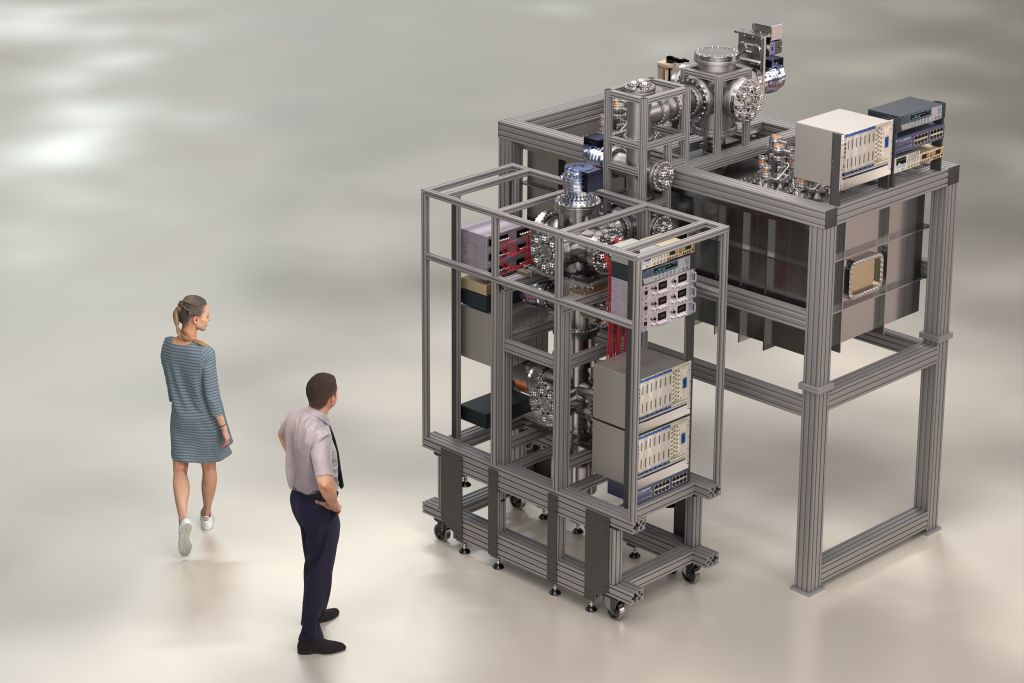Precisions experiments with termalized exotic nuclei will be possible at the Super-FRS at FAIR in Eraly/First Science at the focal plane FHF1 (in front of the High-Energy Branch) and, at a later stage, at the Low-Energy Branch. Exotic nuclei will be produced in-flight and separated in the Super-FRS and their momentum spread will be reduced by energy-bunching. The ions will be further slowed down in a homogeneous degrader, thermalized in a gas-filled stopping cell, extracted and transferred to the experimental setups. The stopping cell is thus the key device for experiments with thermalized exotic nuclei, and its performance characteristics will have a strong impact on the range of nuclides available and their yields, since its stopping and extraction efficiencies and extraction times strongly influence the rate of the extracted nuclei and put a limit to their lifetime.
In combination with a high-resolution broadband mass spectrometer, such as the multiple-reflection time of-flight mass spectrometer (MR-TOF-MS) developed for the MATS experiment, the stopping cell will enable the in-cell production of nuclei by multi-nucleon transfer and fusion reactions, the investigation of the corresponding reaction mechanisms, and the measurement of branching ratios, e.g., beta-delayed neutron emission probabilities. Moreover, it will be a tool for the absolute calibration of the particle identification (PID) in the Super-FRS. Furthermore, using the combination of accurate mass determination with the PID of the Super-FRS on an event-by-event basis, completely new experimental possibilities will become available, such as the identification of millisecond isomers at the Super-FRS and the measurement of the dependence of the isomer-to-ground-state ratios on the production mechanism. These studies will be pursued in the context of the Super-FRS Experiment Collaboration.
At the Low-Energy Branch, high-accuracy mass measurements, in-trap conversion electron and alpha spectroscopy, and trap-assisted spectroscopy will be performed with MATS. Measurements of nuclear spins, magnetic dipole and electric quadrupole moments, and root-mean-square charge radii will be carried out using collinear laser spectroscopy on ions and atoms and beta-NMR experiments with LaSpec. These experiments will address a wide scientific field ranging from nuclear structure and nuclear astrophysics to tests of the weak interaction and of the Standard Model.
For the the Super-FRS, a stopping cell with an areal density of 20 mg/cm2 is required, with a cross section of the stopping volume of 200 cm2, a high extraction efficiency that is element-independent, an extraction time on the order of 10 ms, and a rate capability of 107 ions/s up to a nuclear charge of Z=92. Furthermore, the stopping cell needs to deliver bunches of ions with high purity, in which the ions of interest should typically be the most abundant component for bunches with more than about 102 ions. In order to fulfill these performance requirements, a novel concept for gas-filled stopping cells has been developed. It is based on the cryogenic stopping cell (CSC) of the FRS Ion Catcher, and in addition, it implements the extraction of the thermalized ions in a direction orthogonal to the incoming ion beam (high-areal-density orthogonal-extraction cryogenic stopping cell, HADO-CSC). This will boost all performance characteristics of the stopping cell and thus remove the performance bottleneck of present stopping cells for the thermalization of exotic nuclei produced at relativistic energies. The stopping cell consists of two chambers. The outer chamber provides the insulation vacuum for the inner chamber, which is operated at a temperature of 70 K. The inner chamber contains a stopping region with helium gas at a high pressure and an extraction region with low pressure, and it is pumped differentially. The beam is injected horizontally into the stopping cell and thermalized in the buffer gas. Using electric fields the ions are transported in the vertical direction onto an array of RF carpets, which focuses the ions to several nozzles in the center of the RF carpets. The ions are swept out by the gas flow from the stopping region to the extraction region and there they are transported by a low-pressure RF carpet to the single extraction nozzle and into an extraction RFQ.
